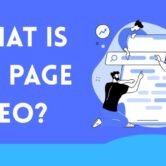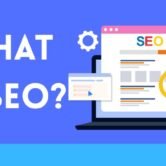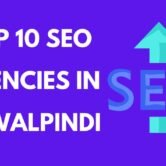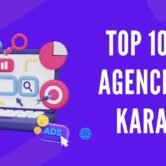
On-page SEO refers to the practice of optimizing individual web pages in order to rank higher in search engine results and earn more relevant traffic. This practice involves both the content and HTML source code of a page. From the title tag, meta descriptions, and headings to keyword usage, internal links, and user experience, every element on a page plays a crucial role in SEO. By focusing on on-page SEO, businesses can make their websites more search engine-friendly, helping them to stand out in the competitive digital landscape. If done correctly, on-page SEO is the foundation for any successful digital marketing strategy.
Table of Contents:
1.What is On-Page SEO?
- Title Tags
- Meta Descriptions
- URL Structure
- Heading Tags (H1, H2, H3)
- Content Optimization
- Internal Linking
- Image Optimization
- Mobile Friendliness
- User Experience (UX)
3.Why On-Page SEO is Important
4.How to Implement On-Page SEO Correctly
5.Conclusion
6.FAQs
1. What is On-Page SEO?
On-page SEO refers to the set of strategies and practices you implement directly on your website to enhance its rankings on search engine result pages (SERPs). Unlike off-page SEO, which involves external signals like backlinks, on-page SEO focuses on optimizing the visible elements on your site, including textual content, multimedia, and HTML source code. In a nutshell, what is on-page SEO? It is all about making your content, website structure, and design as appealing and accessible as possible for both users and search engines alike.
2. Key Elements of On-Page SEO
1. Title Tags
Title tags are one of the most important elements in on-page SEO. The title is what appears in the browser tab and search results. It should contain your target keyword and be written to grab the user’s attention.
2. Meta Descriptions
A meta description provides a brief summary of your page content and appears under the title in search results. Although it doesn’t directly impact rankings, it can improve click-through rates by enticing users to click your link.
3. URL Structure
URLs should be simple, descriptive, and keyword-rich. A well-structured URL enhances both user experience and search engine crawling. Avoid using unnecessary characters or numbers.
4. Heading Tags (H1, H2, H3)
Heading tags structure your content and make it more digestible for both users and search engines. The H1 tag should include your main keyword, while H2 and H3 tags can help organize subheadings logically.
5. Content Optimization
Content is king in on-page SEO. High-quality, keyword-rich content that satisfies user intent is essential. Proper keyword usage and a natural flow of information ensure that your page ranks well.
6. Internal Linking
Internal links connect different pages on your website. They help spread link equity and allow search engines to crawl your site more effectively. They also improve navigation and increase time spent on site.
7. Image Optimization
Images should be optimized for size and file name, and you should always use alt text to describe them. This makes your page load faster and allows search engines to understand the image content.
8. Mobile Friendliness
With more users accessing websites from mobile devices, Google prioritizes mobile-friendly sites in its rankings. Ensure your website is responsive and optimized for all screen sizes.
9. User Experience (UX)
User experience is crucial for SEO. A website that’s easy to navigate, quick to load, and visually appealing encourages visitors to stay longer, reducing bounce rates.
3. Why On-Page SEO is Important
On-page SEO is crucial because it helps search engines understand the content of your website. It provides signals about the relevancy of your content to the query the user is searching for. Optimizing on-page factors like what is on-page SEO ensures that search engines can easily read and index your page, making it more likely to rank higher. Additionally, good on-page SEO improves user experience, which is another important ranking factor. A well-optimized page has a better chance of appearing in the coveted positions on the first page of search results.
4. How to Implement On-Page SEO Correctly
To implement on-page SEO effectively, follow these steps:
- Keyword Research: Start by identifying the right keywords for your niche. Use keyword tools to find phrases that your audience is searching for.
- Content Creation: Write high-quality, original content that provides value to the reader and answers their questions.
- Title & Meta Tags: Include the keyword in the title and meta description. Keep them concise and compelling.
- Optimize Images: Compress images without losing quality. Use descriptive filenames and alt text.
- Mobile Optimization: Ensure your site is responsive and works well on all devices.
- Internal Linking: Add relevant internal links throughout your content to boost the SEO of other pages.
5. Conclusion
what is on-page SEO? It’s a vital part of any SEO strategy aimed at improving website visibility and enhancing user experience. By focusing on factors like keyword optimization, content quality, and page structure, on-page SEO sets the foundation for organic search success. Ensure that your website is optimized with the proper techniques, and you’ll likely see improvements in search engine rankings, user engagement, and overall site performance.
FAQs
1. What is on-page SEO?
On-page SEO is the process of optimizing individual web pages to improve their rankings on search engines and enhance user experience.
2. Why is on-page SEO important?
It helps search engines understand your content, improves visibility, and provides a better user experience, which can lead to higher rankings.
3. How do I improve my on-page SEO?
Focus on keyword research, quality content creation, meta tags, mobile optimization, and user experience improvements.
4. Does on-page SEO affect my website’s ranking?
Yes, properly optimized on-page elements like keywords, headings, and images significantly affect your website’s rankings.
5. Can I do on-page SEO myself?
Yes, you can optimize your website for on-page SEO by following best practices or using SEO tools to guide you.






